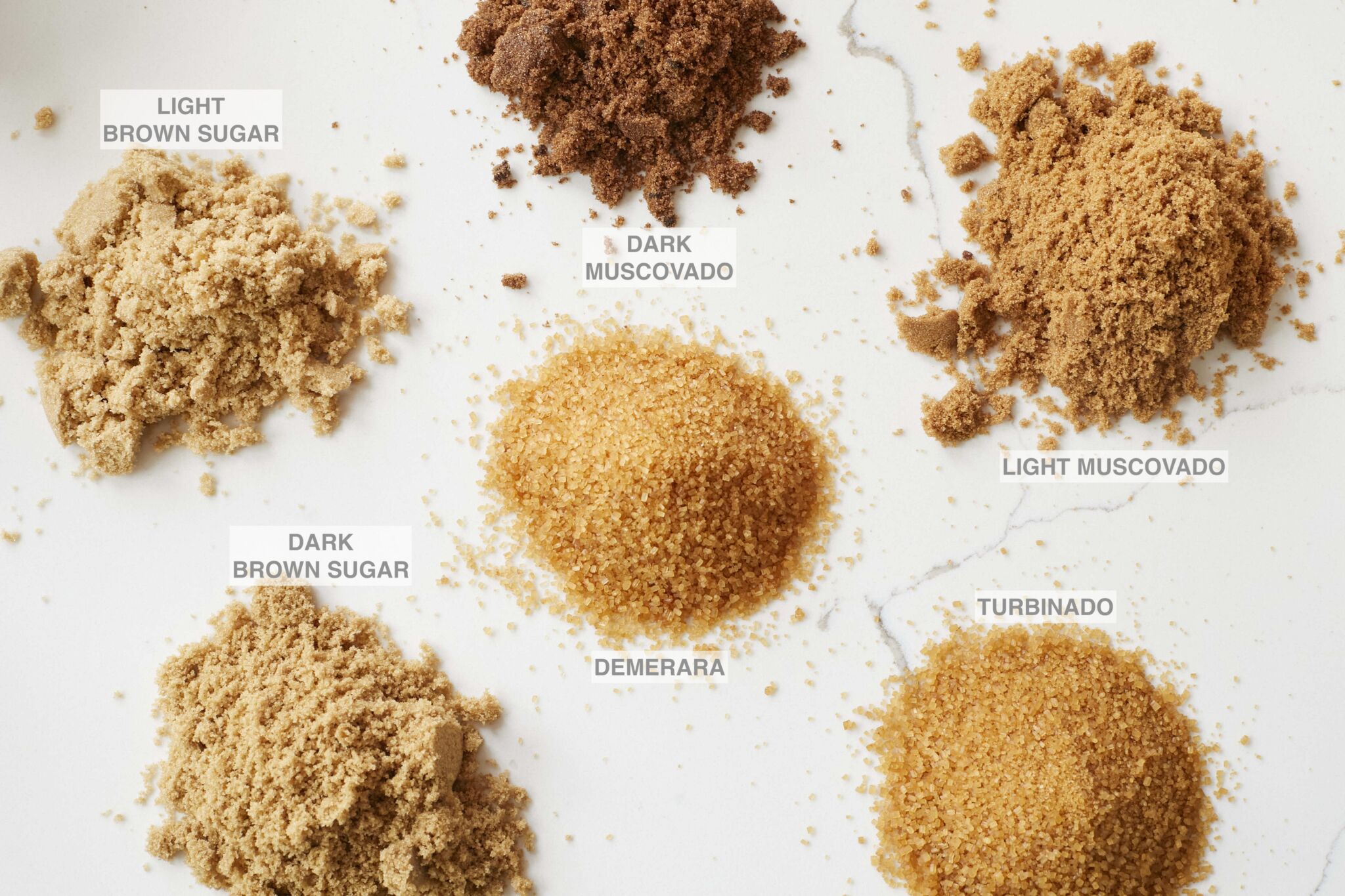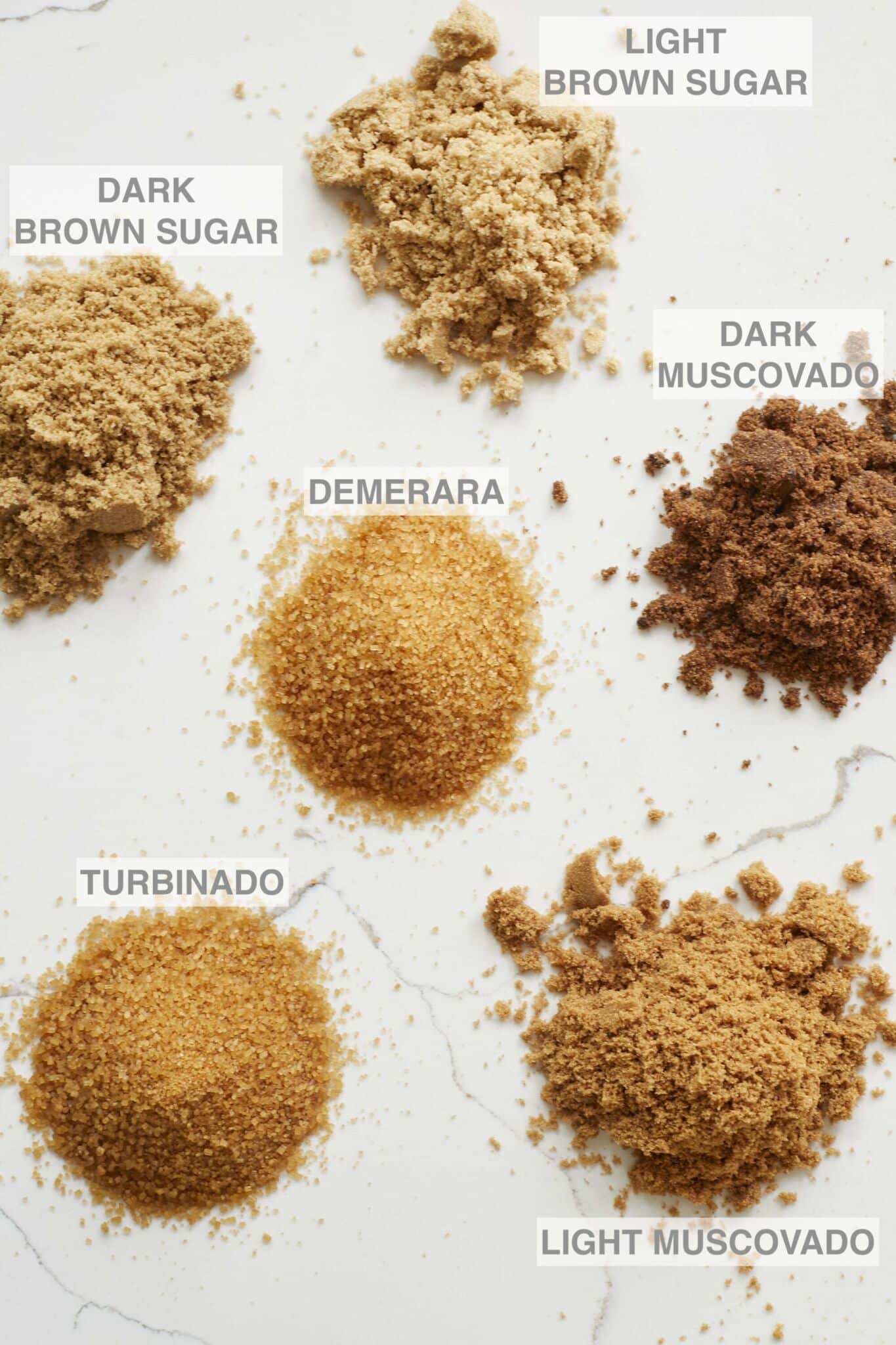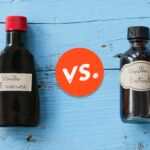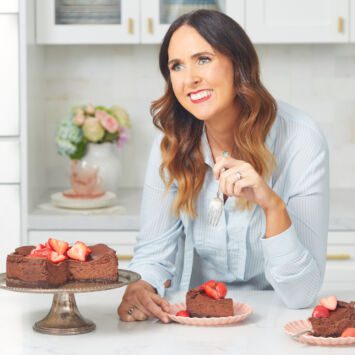
This post may contain affiliate links. Please see my full disclosure for details.
Hi Bold Bakers!
Brown sugars can be confusing!
Have you ever wandered through the baking aisle of your local grocery store or specialty market with the intention of restocking your supply of brown sugar to find yourself wondering whether to buy light or dark brown sugar? And if the baking aisle is well stocked, you might even be passing by demerara, turbinado and muscovado sugars and wondering about them as well and whether you should use this instead? And even more confusing is when a recipe asks for a specialty sugar, are they all interchangeable and can you just substitute basic brown sugar? It can be hard to take that risk on a whole recipe, so we are here to demystify all the options for you.

-
Commercial Refined Light and Dark Brown Sugar
Before we delve deep, let’s start with an overview of the most readily available options: refined light and dark brown sugar. Both of these sugars begin with refined white cane or beet sugar (or a combination of both) that has added cane molasses. More specifically, they are white sugar crystals with a coating of molasses. These sugars are the most commonly available brown sugars throughout many parts of the world as they are the most economical to produce.
-
-
Light Brown Sugar
-
Light brown sugar contains about 3% molasses. It has a golden-brown color and has a light toffee-like flavor. This sugar is used for cakes and cookies in which a more delicate flavor is desired.
-
-
Dark Brown Sugar
-
Dark brown sugar has about 7% molasses, and is darker in color and with a more robust toffee flavor. Dark brown sugar is often used in more heartily flavored spiced or chocolate baked goods.
Despite the slight difference in molasses between these two sugars, they can be used interchangeably in any recipe, depending on whether you want a more or less pronounced toffee flavor. Because of the moisture and slightly acidic nature of brown sugar, you should not substitute white sugar for these sugars without expecting a very different end result, but you can find out how to make Homemade Brown Sugar .
If your brown sugar gets clumpy, check out my article of How to Soften Brown Sugar.
-
Raw Sugar
Raw sugar is still refined sugar but less so than conventional brown sugar. Instead of introducing molasses into refined white sugar, raw sugars are created from the first pressing of sugar cane (and never sugar beets). This juice is first crystalized and then it is put through a centrifugal process that essentially spins crystals to remove most of the molasses. There are two commonly found types of raw sugar: turbinado and demerara.
-
Turbinado Sugar (AKA Sugar in the Raw)
Turbinado sugar gets its name from the centrifugal process used to make it, and the result is large, slightly moist crystals with a subtle caramel flavor. The large crystals don’t mix evenly into batters and doughs, don’t melt in the oven and might give your baked goods some unwanted texture. However, this quality also makes it a great choice for topping cookies, muffins or pastries just before baking when and where a little crunch might be desired. In the United States, turbinado sugar is often sold under the brand name Sugar in the Raw, and can be found in both grocery store baking aisles and also in individual packets in coffee shop sugar bowls.
-
Demerara Sugar
Demerara sugar is commonly used in the United Kingdom. It is quite similar to turbinado with a few slight differences. While it is made by largely the same process, the sugarcane used to make this sugar originally came from the British colony formerly known as Demerara, now called Guyana. The crystals are slightly larger than turbinado while the flavor is a bit more subtle. In terms of use, like turbinado, demerara shines as a finishing sugar, lending a lightly caramel taste and crunchy topping to baked goods.
However, if you would like to try this type of sugar baked in a cake, try it in my Aunty Rosaleen’s Irish Christmas Cake.
-
-
Unrefined Sugars
Unrefined sugars are made from sugar cane or palm sap with little to none of the molasses removed. They are dark and have a full, rich taste, and variations of this type of sugar are found throughout the world.
-
Muscovado Sugar
Muscovado sugar is a granulated brown sugar that can be found in either dark or light brown versions. This sugar is either unrefined or partially refined, depending on the manufacturer. The small, dark and slightly sticky crystals are made by heating pressed cane juice until a thick liquid remains. This liquid is crystalized and then goes through a partial centrifugal process to remove a small amount of the molasses to create a dark muscovado sugar, or a bit more spinning to create a light muscovado sugar. Alternatively, the reduced liquid is then poured into cooling pans and vigorously beaten to form small crystals. Unlike raw sugar, muscovado sugar melts more easily and is commonly used in European baked goods: the more flavorful dark sugar is used for spiced cakes and chocolate-based desserts while the lighter version is used for cookies and lighter cakes.
-
Muscovado sugar has a complex flavor with more intense caramel and toffee flavors when compared with refined light or dark brown sugar, but you can use either of these as a one-to-one substitute in a recipe if needed.
-
-
Piloncillo
-
Piloncillo (also known as panela, panocha and rapadura) is used in Mexico and countries in Central and South America. It is completely unrefined and is made by boiling down pressed cane juice into a thick syrup. This syrup is then poured into cone-shaped molds and left until the liquid evaporates. The resulting hard, compact sugar has a deep caramel-molasses taste and is used by grating the amount needed. It is used for both sweet and savory applications.
If you can’t find piloncillo, you can substitute dark brown sugar plus molasses in this ratio: for 8 oz/225 g piloncillo substitute 8 oz/225 g dark brown sugar plus 2 teaspoons molasses.
-
-
Jaggery
-
Jaggery (also known as gur, among other names) is widely used in India and other Asian countries. It can be made from sugar cane or the sap of date, coconut or toddy palms, and the process is essentially the same as making piloncillo. When made from sugar cane the taste is similar to piloncillo, while palm sap jaggery has a less sweet flavor that is more akin to smokey caramel or dark chocolate. It is sold as a hard block and can be finely chopped or grated for use in sweets, and also used for flavor balance in savory dishes. Piloncillo can be used as a 1:1 substitute, or dark brown sugar in this ratio: for 8 oz/225 g jaggery substitute 8 oz/225 g dark brown sugar plus 2 teaspoons molasses.
We hope this helps clarify what all of these sugars are and how they are best used. May this lead to some delicious experiments!





